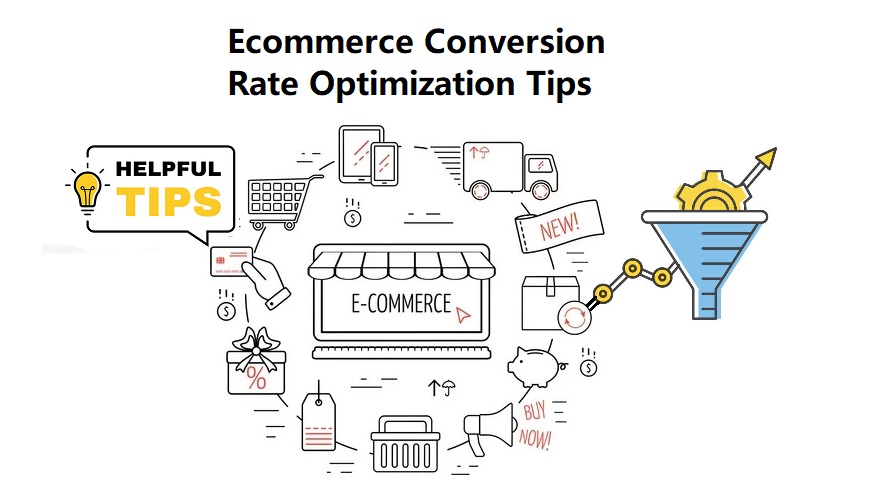
In the world of e-commerce, conversion rate is king. Simply put, it’s the percentage of visitors who complete a desired action on website, such as making a purchase. Here are strategies that can be used to improve e-commerce conversion rate. In this article, we’ll explore some of the most effective techniques for boosting conversion rate and growing business.
7 Proven Strategies to Improve E-commerce Conversion Rate
Optimize Website’s Design
The first step to improving e-commerce conversion rate is to optimize website’s design. The website should be visually appealing, easy to navigate, and optimized for mobile devices. Website’s layout and design should make it easy for customers to find what they’re looking for, and calls to action should be prominently displayed. Ensure that website’s load times are fast, as slow load times can lead to frustrated customers and lost sales.
Simplify the Checkout Process
One of the biggest barriers to conversion is a complicated checkout process. If checkout process is overly complicated, time-consuming, or requires too many steps, it’s likely losing customers at this critical stage. Simplifying the checkout process can dramatically improve conversion rate. This means removing unnecessary steps, reducing the amount of information customers need to provide, and offering multiple payment options.
Use Social Proof
Social proof is a powerful tool for improving e-commerce conversion rate. Social proof refers to the idea that people are more likely to take an action if they see that others have already done so. For example, displaying customer reviews and ratings on product pages can encourage new customers to make a purchase. Similarly, displaying social media follow counts and customer testimonials can help build trust with potential customers.
Offer Free Shipping
Free shipping is a powerful motivator for online shoppers. Studies have shown that customers are more likely to make a purchase if free shipping is offered. If business model allows for it, consider offering free shipping to improve conversion rate. If free shipping can be offered on all orders, consider offering it on orders over a certain dollar amount, or for customers who sign up for a loyalty program.
Use Retargeting
Retargeting is a powerful technique for improving e-commerce conversion rate. Retargeting refers to the practice of targeting customers who have already visited your website but didn’t make a purchase. By using cookies to track visitors and display targeted ads to them across the web, encourage them to return to your site and complete their purchase. Retargeting can be a highly effective way to boost your conversion rate and recover lost sales.
Offer Incentives
Incentives are a powerful motivator for customers. Offering incentives such as discounts, free gifts, or loyalty points can encourage customers to make a purchase. These incentives can be used to entice customers who are on the fence about making a purchase, or to reward loyal customers for their continued business.
Personalize the Shopping Experience
Personalization is becoming increasingly important in e-commerce. By personalizing the shopping experience, make customers feel valued and create a stronger connection with them. Personalization can take many forms, from displaying personalized product recommendations based on a customer’s browsing history, to using their name in emails and offering personalized promotions.
Frequently Asked Questions
What is the average e-commerce conversion rate?
The average e-commerce conversion rate varies depending on the industry and the website’s target audience. However, a conversion rate between 2-3% is considered average.
How do I know if my e-commerce conversion rate is good or bad?
A good e-commerce conversion rate depends on various factors such as industry, type of product, and target audience. If your conversion rate is above the industry average and is consistent over time, it can be considered good. On the other hand, if your conversion rate is consistently lower than the industry average, it may be time to revisit your strategies.
What are some common reasons for low e-commerce conversion rates?
Some common reasons for low e-commerce conversion rates include complicated checkout processes, slow website load times, unclear product descriptions, lack of social proof, poor website design, and a lack of incentives for customers to complete a purchase.
How can I use social proof to improve my e-commerce conversion rate?
You can use social proof in various ways, such as displaying customer reviews and ratings on your product pages, displaying social media follow counts and customer testimonials, and featuring endorsements from industry experts or influencers.
How can I simplify my checkout process to improve my e-commerce conversion rate?
You can simplify your checkout process by removing unnecessary steps, reducing the amount of information customers need to provide, offering multiple payment options, and providing a progress indicator to show customers where they are in the checkout process.
How can I personalize the shopping experience to improve my e-commerce conversion rate?
You can personalize the shopping experience by displaying personalized product recommendations based on a customer’s browsing history, using their name in emails and offering personalized promotions, and sending personalized follow-up messages after a purchase.
In summary, optimizing the category and product pages of your e-commerce website is vital for increasing conversion rates and growing your business. By refining your website’s design, simplifying the checkout process, incorporating social proof, offering free shipping, utilizing retargeting, providing incentives, and personalizing the shopping experience, you can enhance customer engagement and drive more sales. Implementing these strategies will set your e-commerce business on a path to greater success and sustained growth.




